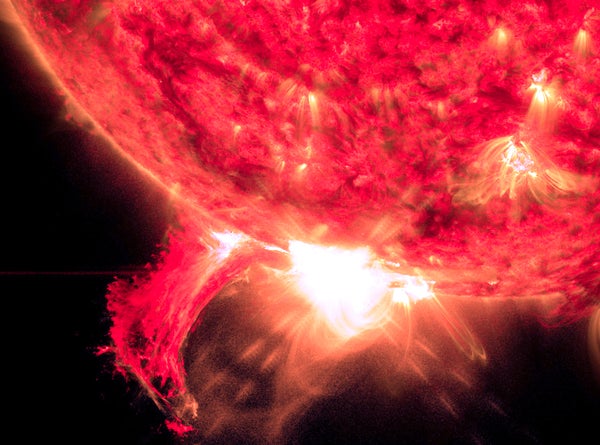This article was published in Scientific American’s former blog network and reflects the views of the author, not necessarily those of Scientific American
As space-faring organisms, humans are pretty useless. We've evolved to be highly tuned to the constant acceleration of standing on an Earth-mass planet. Our bodies don't appreciate micro-gravity. It messes with our circulatory system, it makes us puffy, and it messes up our vision. Our cells also don't like the increased radiation environment of space very much, especially our neurons. All told, as the landmark Twin Study with the astronauts Mark and Scott Kelly has shown in detail, going into space causes a host of stress-like responses. Many of these reach down to our genome itself, as well as our immune system and gut microbiome.
Radiation is a particular concern for any long-term Earth-orbiting presence, or for getting to places like Mars or asteroid targets. On these journeys the hazards from solar and cosmic particle radiation increases significantly from the environment of low Earth orbit, where the planetary magnetic field offers a modicum of protection.
Data from various robotic Mars missions and other investigations indicate that during transit to Mars an astronaut might be exposed to an average radiation dosage some 700 times that on Earth. Data from the ExoMars Trace Gas Orbiter, for instance, suggests that during a fairly typical 6 month journey to Mars an astronaut might receive about 60% of their lifetime radiation exposure back on Earth.
On supporting science journalism
If you're enjoying this article, consider supporting our award-winning journalism by subscribing. By purchasing a subscription you are helping to ensure the future of impactful stories about the discoveries and ideas shaping our world today.
Finding the right shielding that can protect people is challenging. Any space mission is limited by mass. More mass means you need more fuel for propulsion. But radiation shielding is also a matter of not making things worse. For example, when very high energy cosmic particles smack into material they can cause a burst of slower but devastating radiation in the form of particles like neutrons. You might be protected from the original cosmic radiation, but by trying to block it you've actually caused it to dump its energy right onto you instead of zipping on through.
One answer is for a layer of shielding to damp out the energy in all of those secondary particles. To do that it can actually help if the atomic nuclei in the shield material are similar in mass to (for example) damaging neutrons - absorbing energy in elastic nuclear collisions. That means that material with a high hydrogen content, such as organic compounds like polyethylene, should work better.
But figuring out exactly the right set of ingredients is tough, and requires experimentation. Intriguingly, one of the most interesting avenues is the use of lithium compounds. A paper published in February 2019 by Schuy and colleagues presents the results of a study of lithium hydride (LiH). What they find is promising, with evidence that lithium hydride can attenuate particle radiation over distances 20% shorter than for polyethylene.
The idea of using lithium hydride as a radiation shield in space is not entirely new; it was discussed back in the 1970s. It's unpleasant material, highly reactive to water in air. But it could also be useful stuff for a developing Mars settlement. LiH can be a starting compound for making lithium aluminum hydride, used as a reagent in organic synthesis. It also releases hydrogen in its reaction with water. And lithium is of course a critical ingredient in modern battery technology, as well as numerous other industrial processes.
Lithium hydride shields might help you get to Mars in one piece, and set up a fledgling society when you get there.
